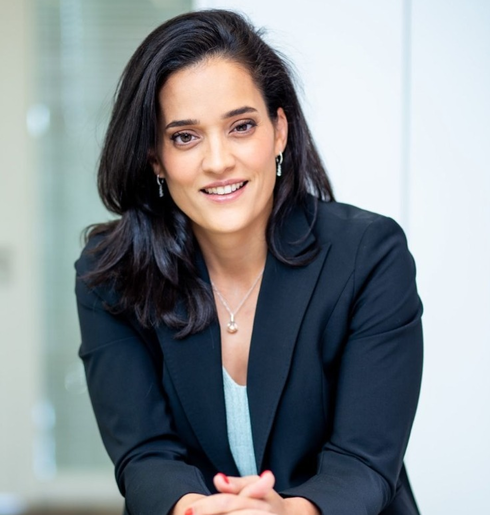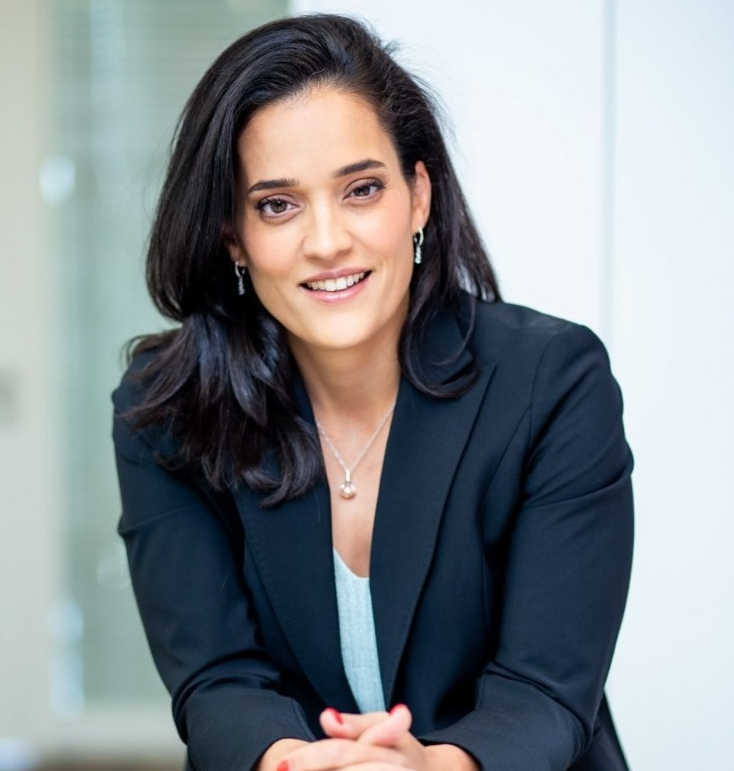
2022 VC Survey
From a sprint to a marathon: How companies need to prepare for 2023
Partner and Head of DTCP Israel Irit Kahan drew the comparison taking part in CTech’s series, 2022 VC Survey
“While 2021 can also be defined as the year of the big sprint, consuming a lot of resources to move ahead at maximum pace, 2022 is the year of the big cool down resulting in an adjustment to the course of traction, requiring the market to adjust gears and muscle up to head for the long term,” said Irit Kahan, Partner and Head of DTCP Israel. “While the Israeli market has very strong companies with excellent capabilities, a sprint is more challenging over the long term as there is a strong reliance on the immediate availability of the fuel in the form of capital, a slight deviation can hamper the speed immediately.”
Companies that were rushing last year to make money will have a hard time adjusting to the more cautious and long-term strategies expected in the new year. “The adjustment to running a marathon is over the long term only healthy; a marathon is more long-term focused, sustainable, and scalable where the path to the finish line is more important than the immediate speed; for some it will be an easier adjustment, others will struggle more and possibly have a harder time to keep up,” she continued.
Name of fund/funds: DTCP (Growth)
Total sum of funds: $2.3 billion AUM (across “DTCP Growth” and “DTCP Infra”)
Partners of DTCP Growth: Jack Young, Thomas Preuss, Irit Kahan
Notable/select portfolio companies of DTCP Growth: Axonius, Guardicore, Epsagon, Dynamic Yield, AppsFlyer, Fireglass, Okta / Auth0, Fastly, Pipedrive, Arctic Wolf, Signavio, Aircall, LeanIX
Kahan joined CTech as part of its “2022 VC Survey” series to share her insights and predictions for the year ahead.
If 2020 was the year of the pandemic, and 2021 was the year of records, how would you define 2022 in the VC sector?
While 2021 can also be defined as the year of the big sprint, consuming a lot of resources to move ahead at maximum pace, 2022 is the year of the big cool down resulting in an adjustment to the course of traction, requiring the market to adjust gears and muscle up to head for the long term. While the Israeli market has very strong companies with excellent capabilities, a sprint is more challenging over the long term as there is a strong reliance on the immediate availability of the fuel in the form of capital, a slight deviation can hamper the speed immediately. 2022 introduced several significant deviations from the racetrack, both economical and geopolitical, which led to a sharp decrease in the supply of capital. The adjustment to running a marathon is over the long term only healthy; a marathon is more long-term focused, sustainable, and scalable where the path to the finish line is more important than the immediate speed; for some it will be an easier adjustment, others will struggle more and possibly have a harder time to keep up.
Who are the big winners of 2022 and why?
The big winners are the ones that quickly adjusted to the changing market environment and were well-equipped to move from a sprint back to a marathon. These are the companies that are based on a good business model and strong underlying fundamentals and operate in strategic markets that are less exposed to market swings. They are likely also the ones that used the market environment in 2021 to raise large amounts of capital and have strong cash runways to weather the storm. The focus moved from speed to efficiency, from short term achievements to a long-term sustainable track. A key SaaS KPI to watch out for is the rule of 40 where the topline growth is measured against the company’s profitability (or profit margin). Being able to control your rule of 40 means you are based on the right fundamentals to be able to efficiently adjust gears at the optimal level whether you are in a bull or bear market.
Who are the big losers of 2022 and why?
In the exact opposite to the above, companies that are inherently built on an inefficient business model from a unit economics basis will have a harder time to adjust and maneuver their rule of 40. They will have a harder time to effectively adjust the spend to make up for the lower growth environment. Same with above, companies that have not raised enough in 2021 and will need to meet the market earlier will have a harder time.
What do you expect in the VC sector in 2023?
There is a lot of dry powder waiting to be deployed, and investors continue to have an appetite and invest in technology as there are strong tech companies in the market and the secular tech trends prevail. Additionally, as with any previous market downturns, the following years should be great vintage years.
With that, the bar is much higher now and investors are more cautious.
In a lower growth environment, companies will take more time to scale into the valuations and the public market drop created a mismatch between what investors are willing to pay and the spot valuations, creating a bid ask spread that will likely reach into 2023. But, the spread will ultimately close and there are certain ways to mitigate the valuations and create a win/win for both founders and investors.
Due diligence processes will be more comprehensive, and more things will need to change in between rounds to justify an uptick in valuations, lowering fundraising velocity. Capital will likely flow into comparatively fewer sectors and the companies perceived as “best” will attract the lion share of capital, creating a “flight to quality” and there will likely be less appetite for binary outcomes.
We at DTCP just did the first close of our third fund and are bullish to invest in the next great companies. We have always invested on a risk-adjusted basis and will continue to do so. We are looking not for binary outcomes, but for risk-adjusted returns by investing in category leading companies with must-have products in large markets.
What global processes will affect (positively and negatively) the Israeli market?
The global macroeconomy thrives on market stability, uncertainty can be toxic as it creates a lot of volatility. The concern of a recession hangs over the global markets and until this is not cleared things will be relatively unstable. Corporate budgets will be negatively impacted, and spending will be allocated to high priority functions. Additionally, the lack of visibility as to how long the Fed will continue to raise rates as well as the ongoing geopolitical tensions add additional clouds to the sky. This certainly has an impact on the growth of the Israeli market, and the tech companies operating in it, but overall, the Israeli economy is relatively stable compared to the rest of the world. The strong secular trends will continue to drive innovations and growth in Israel, especially in the core sectors of the Israeli tech market such as cyber, data, AI etc.
How should different companies (large, medium, early-stage) prepare for the coming year?
In the medium to later stages, the focus is now on improving profitability and ensuring a healthy customer base. With a reduced supply, cash has become more expensive and less accessible, requiring companies to become more efficient and rethink overhead, effectively trimming down the overhead to mission critical and core business functions. Additionally, depending on the level of recession, new sales will become increasingly harder as there is pressure on corporate spending and sales cycles become longer / contract values get smaller, as such it is important to continue investing in the product offering to maintain a healthy customer base and ensure future renewals and expansions of existing customers.
As to whether explore new areas or markets, that depends on the current positioning and strength of the company. It is not to be forgotten that market downturns typically create a Darwinian survival of the fittest where the strong companies get stronger and have a chance to grab significant market share.
In the early stages, companies should be focused on a product market fit and a scalable sales execution. As mentioned earlier, scaling is a marathon and not a sprint and as such should the company be built.
What will be of the dozens of unicorns born last year?
We have already seen significant adjustments to enormous valuations in the private markets to a more sustainable valuation over the long term and will also see adjustments in the recently born unicorn companies. As they typically raised a large amount of cash, it will take time until we will see the big swings. The strong companies will be able to adjust and switch gears to effectively use the cash on hand to grow into the valuations, while others will have a harder time to survive under the unicorn status. There are alternatives to extend the runway, we have seen CLAs / SAFEs or other forms of structured rounds which can be a form to mitigate the spot valuations and thereby keep the status. The bar has become higher, and the spotlight moved from unicorn to centaur status, here again the move from a sprint to a marathon, whereby the focus is crossing the $100 million ARR long-term milestone and doing so on strong fundamentals. For this, companies will need raise enough funding and the sum raised should be key priority to ensure there is a safe path to $100m++.
What sectors in high-tech should we look out for in the coming year - and why?
With a possible recession in the outlook, recession-proof sectors are the ones to watch out for. Those are typically markets with products that are of strategic importance to enterprises and are must haves. For example, cybersecurity is a market where corporates will need to continue spend to be well protected, as the price of being unprotected is far higher and can cause significant financial as well as reputational damage. Cloud infrastructure is another vertical that will continue to grow, specifically product offerings that effectively manage and optimize the cloud and business processes.
HR: Do the layoffs, those that have already happened and those that are coming, help to fix in any way the distress experienced by companies over the past 2-3 years?
As unpleasant and sensitive the topic is, layoffs help to add runway and improve efficiencies, as companies have over-hired during the peak year to be well positioned for the future growth. We have seen a big increase in the ratio of FTEs versus ARR (annual recurring revenues) over the past years and this needs to come down to be productive.
As much as the employment conditions were “fantastic” for the employees, a basic economical principle is that they also need to be efficient to be sustainable over time and I think that compensation in technology will remain rewarding but will also find its equilibrium of long-term sustainability.
Cognigy, Hunters, and Dremio - DTCP (Growth)’s notable portfolio companies
Cognigy
Cognigy is an end-to-end low-code/no-code Conversational AI and automation platform. It enables enterprises to communicate effectively and intelligently with customers and employees 24/7 across 20+ languages on all conversational channels including chatbots, virtual assistants or voice-bots over the phone.
Founders: Philipp Heltewig, Sascha Poggemann
Founding year: 2016
Number of employees: 158
Explanation behind investment: In the large and growing conversational AI market, Cognigy is a leading and powerful conversational AI platform, making intelligent and virtual assistants more accessible to customers and employees. It’s a must-have product for businesses worldwide thanks to its easy deployment, fast time to value, deep integrations, numerous ROI-heavy use-cases and a robust no-code usability.
Hunters
Hunters is a modern SOC platform which is built on a modern data infrastructure and uses machine learning to automatically correlate, investigate and prioritize incidents, empowering security teams to identify and respond to incidents in real time and in a manner that is much more cost-effective and scalable than traditional SIEMs.
Founders: Uri May, Tomer Kazaz
Founding year: 2018
Number of employees: 154
Explanation behind investment: As technology advances and more tools are being used, the attack surface becomes larger and more sophisticated. Companies are constantly challenged to be prepared to see the full picture of the threat landscape and respond to incidents in a quick and effective manner. That puts a significant load on the security teams, where there is an enormous talent shortage in the industry. SIEMs have been the center of operations for security teams, but they weren’t designed to effectively manage the complexity, volume and scale of the threat landscape seen today. Hunters alleviates the pain of traditional SIEMs, which is often costly, complex and time consuming, with advanced automated correlation and threat hunting capabilities built on top of modern data infrastructure. Hunters is not only flexible enough to augment a SIEM but also powerful enough to fully replace it.
Dremio
Dremio provides an SQL Lakehouse platform that prioritizes user experience, simplicity, and scalability with a focus on BI applications. Its value proposition is to simplify the process of ingesting and analyzing data for Business Intelligence teams, replacing data warehouses with non-proprietary data, lower storage costs, and eliminating the need to involve the data engineering team for simple self-serve BI.
Founder: Tomer Shiran
Founding year: 2015
Number of employees: 400
Explanation behind investment: Dremio is a data lakehouse based on an open architecture embracing the open-source file and table formats. Dremio's data lakehouse adopts all the things of a warehouse directly on object storage (S3), insert, update - all the things you can do with a database on open format. And, Dremio's data lakehouse is a lower cost and lock-in alternative to a data warehouse.













